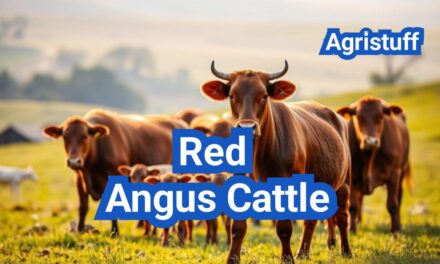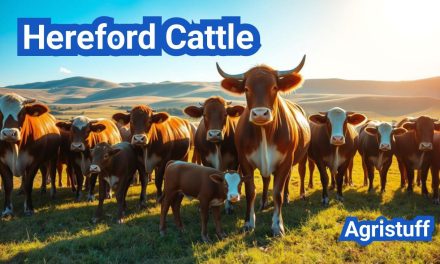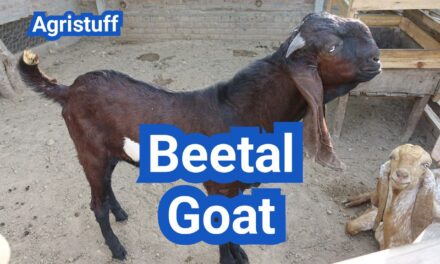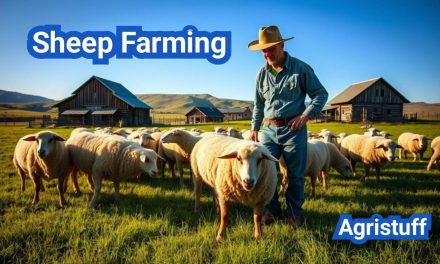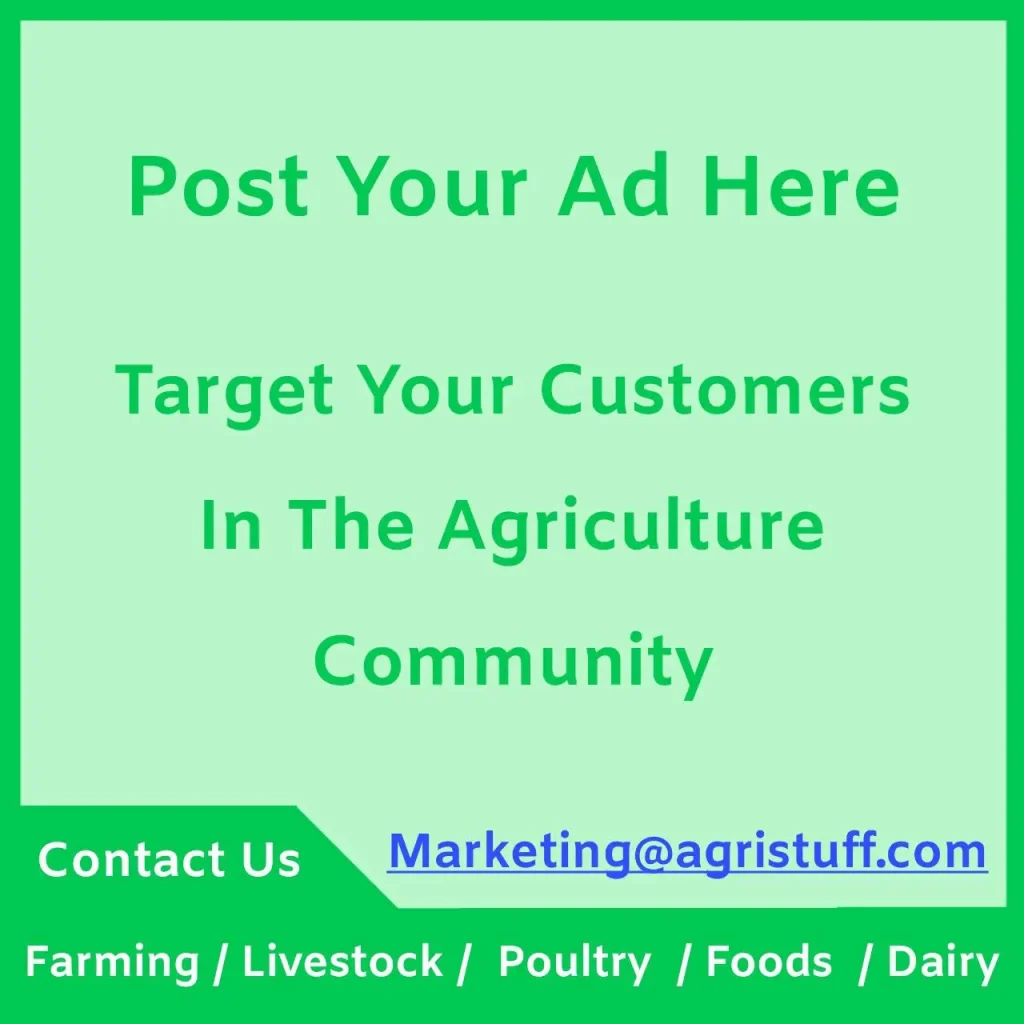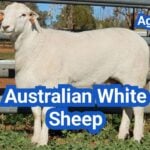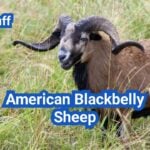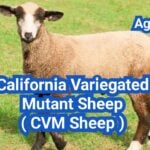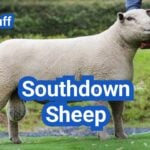A well-planned goat feed guide is crucial for maintaining a healthy herd. Unlike other ruminants, such as sheep and cattle, goats have unique dietary needs and preferences.
Proper nutrition is key to the overall health and productivity of goats. A balanced diet that includes optimal protein levels, essential minerals, and adheres to safe feeding schedules is vital.
Key Takeaways
- Understanding the nutritional requirements of goats is essential for their health.
- A balanced diet for goats includes optimal protein levels and essential minerals.
- Safe feeding schedules are crucial for maintaining goat health.
- A well-planned goat feed guide helps in achieving optimal goat nutrition.
- Goats have different dietary needs compared to other ruminants.
Understanding Goat Nutritional Needs
Understanding the nutritional requirements of goats is crucial for their overall well-being and productivity. Goats are ruminants with a four-compartment stomach, which allows them to digest a wide variety of foods, from grasses to grains. However, this unique digestive system also means they have specific nutritional needs that must be met.
Basic Nutritional Requirements
Goats require a balanced diet that includes proteins, carbohydrates, fats, vitamins, and minerals. Proteins are essential for growth and repair, while carbohydrates and fats provide energy. Vitamins and minerals are crucial for various bodily functions, including immune response and bone health. A deficiency in any of these nutrients can lead to health issues.
“A well-balanced diet is key to maintaining the health and productivity of goats,” as noted by experts in goat husbandry. Ensuring that goats receive the right nutrients in the correct proportions is vital.
Differences Between Goat Types
The nutritional needs of goats can vary significantly based on their type. For instance, dairy goats require more energy and protein during lactation to support milk production. Meat goats, on the other hand, may require more energy for growth. Pet goats or those kept for fiber production have different needs as well. Understanding these differences is crucial for providing the right nutrition.
| Goat Type | Nutritional Needs |
|---|---|
| Dairy Goats | High energy and protein for milk production |
| Meat Goats | High energy for growth |
| Pet/ Fiber Goats | Balanced diet for maintenance and fiber production |
Water – The Most Important Nutrient
Water is often overlooked but is the most critical nutrient for goats. Goats need access to fresh, clean water at all times. Water is essential for digestion, temperature regulation, and overall health. Dehydration can lead to serious health issues, including decreased milk production in dairy goats and reduced growth rates in meat goats.
Ensuring that goats have access to clean water is as important as providing them with the right feed. Regular checks on water quality and availability can help prevent health issues related to dehydration.
Essential Components of Quality Goat Feed

The nutritional needs of goats are complex, involving a delicate balance of various feed components. A well-balanced diet is crucial for maintaining their overall health, productivity, and longevity.
Protein Requirements and Sources
Protein is a critical component of a goat’s diet, essential for growth, maintenance, and production. The protein requirements vary depending on factors such as age, breed, and production level. Generally, goats require a diet with a protein content ranging from 12% to 18%. Legumes like alfalfa and clover are excellent sources of protein, while grains like soybean meal and cottonseed meal are also commonly used.
It’s worth noting that the quality of protein is as important as the quantity. Goats require a mix of essential amino acids that are often found in high-quality protein sources. As stated by the
“National Research Council, the protein requirements of goats are influenced by their physiological state, such as growth, pregnancy, or lactation.”
Energy Sources in Feed
Energy is another vital component of a goat’s diet, necessary for maintaining their bodily functions, growth, and production. Goats derive energy from various sources, including carbohydrates and fats. Grain mixes containing corn, barley, and oats are common energy sources. The energy requirements of goats vary depending on their age, size, breed, and level of production.
| Feed Type | Energy Content (MJ/kg) | Protein Content (%) |
|---|---|---|
| Corn | 14.2 | 9 |
| Barley | 13.4 | 12 |
| Oats | 12.2 | 11 |
Fiber Content for Rumen Health
Fiber is essential for maintaining the health of a goat’s rumen, the largest compartment of their stomach. A diet rich in fiber helps to promote a healthy rumen microbiome, which is crucial for the digestion and utilization of nutrients. High-quality forages like hay and pasture are rich in fiber. The fiber content of a goat’s diet should be balanced to ensure optimal rumen function.
In conclusion, the essential components of quality goat feed include protein, energy, and fiber. By understanding the nutritional requirements of goats and providing a balanced diet, goat farmers and breeders can help maintain the health and productivity of their animals.
Protein Levels in Goat Feed
Understanding the optimal protein levels in goat feed is crucial for maintaining the health and productivity of your goats. Protein is a critical component of a goat’s diet, influencing growth, milk production, and overall well-being.
Optimal Protein Percentages by Goat Type
Different types of goats have varying protein requirements. For instance, dairy goats generally require higher protein levels compared to meat goats. Dairy goats need around 16-18% protein in their diet, especially during lactation, to support milk production. On the other hand, meat goats may require slightly lower protein levels, typically around 14-16%, depending on their growth stage and production goals.
| Goat Type | Protein Requirement (%) |
|---|---|
| Dairy Goats | 16-18 |
| Meat Goats | 14-16 |
| Angora Goats | 15-17 |
Plant vs. Animal Protein Sources
Goats can derive protein from both plant and animal sources. Plant-based proteins are commonly used in goat feed due to their availability and cost-effectiveness. Examples include soybean meal, alfalfa meal, and cottonseed meal. Animal-based proteins, such as fish meal, are also used but are generally more expensive.
The choice between plant and animal protein sources depends on several factors, including nutritional requirements, cost, and availability. Plant proteins are often sufficient for most goats, but animal proteins can provide essential amino acids that may be lacking in plant-based diets.
Adjusting Protein for Growth Stages
Goats have different protein needs at various stages of their life cycle. For example, kids require high protein levels (around 18-20%) for growth and development. Lactating does also need higher protein to support milk production. In contrast, mature goats that are not lactating or growing may require lower protein levels (around 10-12%).
Adjusting protein levels according to the growth stage ensures that goats receive the necessary nutrients for optimal health and productivity. Farmers should consult with a nutritionist to formulate a feeding plan that meets the specific needs of their goats at different life stages.
Complete Guide to Goat Feed Types

Goat feed comes in various forms, each designed to cater to different nutritional requirements and production stages. Understanding these feed types is essential for goat owners to ensure they are providing the best possible nutrition for their animals.
Commercial Pellets and Grain Mixes
Commercial pellets and grain mixes are popular choices among goat owners due to their convenience and balanced nutritional content. Commercial pellets are formulated to provide a complete diet, containing a mix of grains, proteins, and minerals. Grain mixes, on the other hand, can be used as supplements to enhance the energy content of a goat’s diet.
A comparison of commercial pellets and grain mixes is provided in the table below:
| Feed Type | Nutritional Content | Usage |
|---|---|---|
| Commercial Pellets | Balanced mix of grains, proteins, and minerals | Complete diet or supplement |
| Grain Mixes | High energy content | Supplement to enhance energy |
Roughage Options
Roughage is a critical component of a goat’s diet, aiding in rumen health and overall digestive well-being. Common roughage options include hay, silage, and pasture grazing. The choice of roughage depends on availability, cost, and the nutritional needs of the goats.
- Hay: Provides fiber and can be stored for long periods.
- Silage: Made from fermented plant material, it’s a nutritious feed option.
- Pasture Grazing: Allows goats to graze naturally, promoting rumen health.
Supplements and Additives
In addition to the main feed types, supplements and additives can be used to enhance the nutritional profile of a goat’s diet. These can include vitamins, minerals, and other nutrients that may be lacking in the primary feed.
- Vitamin and mineral supplements to address specific deficiencies.
- Probiotics to support gut health.
- Other additives like buffers to maintain rumen pH.
By understanding and utilizing the various goat feed types, owners can ensure their animals receive a balanced and nutritious diet tailored to their specific needs.
Mineral Requirements for Healthy Goats
Goats require a balanced intake of minerals to maintain optimal health and productivity. Minerals play a crucial role in various bodily functions, including bone development, nerve function, and metabolism.
Essential Minerals Overview
Goats need a range of essential minerals, including calcium, phosphorus, magnesium, potassium, and trace minerals like copper, zinc, and selenium. These minerals are vital for maintaining overall health, preventing diseases, and ensuring optimal productivity.
- Macrominerals such as calcium and phosphorus are crucial for bone development and maintenance.
- Trace minerals like copper and zinc are essential for various metabolic processes and enzyme functions.
Copper in Goat Feed
Copper is a critical trace mineral for goats, playing a key role in immune function, connective tissue health, and pigmentation. Copper deficiency can lead to serious health issues, including neonatal ataxia in kids and swayback.
To ensure adequate copper intake, goat farmers can provide mineral supplements or copper-fortified feeds. However, it’s essential to avoid over-supplementation, as excessive copper can be toxic.
Calcium to Phosphorus Ratio
The calcium to phosphorus ratio is vital for maintaining healthy bone development and preventing metabolic disorders. An optimal ratio typically ranges between 1.2:1 and 2:1.
| Calcium:Phosphorus Ratio | Health Impact |
|---|---|
| 1.2:1 to 2:1 | Optimal for bone health |
| Less than 1:1 | Risk of phosphorus toxicity |
| Greater than 2:1 | Risk of calcium imbalance |
Mineral Supplements and Delivery Methods
Mineral supplements can be delivered through various methods, including free-choice minerals, mineral-fortified feeds, and injections. The choice of delivery method depends on the specific needs of the goats and the farm management practices.
- Free-choice minerals allow goats to self-regulate their mineral intake.
- Mineral-fortified feeds provide a balanced mix of minerals in the daily ration.
- Injections are typically used for specific conditions, such as selenium deficiency.
By understanding and meeting the mineral requirements of goats, farmers can promote healthy growth, productivity, and overall well-being.
Formulating Balanced Goat Feed

Creating a balanced goat feed is crucial for the health and productivity of your goats. A well-formulated feed ensures that your goats receive all the necessary nutrients for optimal growth, milk production, or meat production.
To formulate a balanced goat feed, it’s essential to understand the nutritional requirements of goats. This includes knowing the optimal levels of protein, energy, fiber, and essential minerals. The nutritional needs can vary based on factors such as the age, breed, and production level of the goats.
DIY Feed Formulation Basics
Formulating your own goat feed can be cost-effective and allows for customization based on the specific needs of your goats. To start, you’ll need to determine the nutritional requirements of your goats and then select ingredients that meet those needs.
Common ingredients in homemade goat feed include grains like corn and oats, protein sources such as soybean meal, and minerals like calcium and phosphorus. It’s crucial to ensure that the feed is well-balanced and that the ingredients are fresh and of high quality.
Commercial vs. Homemade Options
Both commercial and homemade feed options have their advantages. Commercial feed is convenient and formulated to meet specific nutritional standards. However, it can be more expensive, and you may have limited control over the ingredients.
Homemade feed, on the other hand, allows for customization and can be more cost-effective. However, it requires a good understanding of goat nutrition and careful formulation to ensure that the feed is balanced.
Adjusting Feed for Seasonal Changes
Goats’ nutritional needs can change with the seasons. For example, during colder months, goats may require more energy to stay warm, while in hotter months, they may need more hydration and possibly less energy-dense feed.
Adjusting the feed according to seasonal changes can help maintain the health and productivity of your goats. This might involve changing the composition of the feed or the feeding schedule.
In conclusion, formulating a balanced goat feed requires careful consideration of the goats’ nutritional needs, the choice between commercial and homemade options, and adjustments for seasonal changes. By getting it right, you can ensure the health and productivity of your goats.
Specialized Goat Feed for Different Life Stages

Understanding the unique nutritional needs of goats at various life stages is essential for providing the right feed. Goats, like other livestock, have different requirements as they grow and develop.
Kids and Weanlings
Kids and weanlings require a diet rich in protein and energy to support their rapid growth and development. High-quality starter feed is crucial for kids, typically containing 18-20% protein. Weanlings, on the other hand, may require a slightly lower protein content but still need a nutrient-dense diet.
A suitable feed for kids and weanlings should include:
- High-protein ingredients like soybean meal or alfalfa
- Energy sources such as corn or oats
- Essential vitamins and minerals
Lactating Does
Lactating does have significantly higher nutritional needs due to the demands of milk production. They require a diet rich in energy, protein, and calcium to support milk production and maintain their own health.
A feeding program for lactating does should include:
- Increased energy density
- Higher protein content (around 16-18%)
- Adequate calcium and phosphorus for milk production
| Nutrient | Requirement for Lactating Does |
|---|---|
| Protein | 16-18% |
| Energy | High energy density |
| Calcium | Adequate for milk production |
Bucks and Wethers
Bucks and wethers have different nutritional requirements compared to lactating does or growing kids. Bucks, especially during breeding season, may require a diet that supports their energy needs and maintains their body condition.
Wethers, being castrated males, often require less energy and protein than bucks but still need a balanced diet to maintain their health.
A balanced feed for bucks and wethers should include:
- Moderate energy and protein levels
- Essential vitamins and minerals
- Adequate fiber for rumen health
By providing specialized feed tailored to the different life stages of goats, farmers can ensure optimal health, productivity, and profitability.
Dairy Goat Feed Requirements

Dairy goats have specific nutritional needs that must be met to ensure high-quality milk production. A well-balanced diet is crucial for maintaining the health of the dairy goat herd and maximizing milk yield.
Nutritional Needs for Milk Production
Dairy goats require a diet rich in nutrients to support milk production. Energy and protein are critical components, as they directly impact milk yield and quality. The nutritional needs can vary depending on factors such as the stage of lactation and the breed of the goat.
Feed Impact on Milk Quality
The quality of feed given to dairy goats has a direct impact on the quality of milk produced. Nutrients such as omega-3 fatty acids and certain vitamins can enhance milk quality, making it more nutritious for consumers.
Conversely, poor feed quality can lead to decreased milk quality and potentially harm the health of the consumer.
Recommended Commercial Feeds for Dairy Goats
Several commercial feeds are available that cater specifically to the nutritional needs of dairy goats. These feeds are formulated to provide the necessary balance of energy, protein, and other nutrients.
Examples include feeds from reputable manufacturers that specialize in dairy goat nutrition.
Meat Goat Feed Rations

The formulation of meat goat feed rations plays a significant role in determining the overall health and growth of the animals. Meat goat producers must carefully consider the nutritional components of their feed to ensure optimal performance.
Growth-Promoting Feed Components
Growth-promoting feed components are essential for meat goats, particularly during the early stages of their development. Protein-rich feeds are critical, as they provide the necessary building blocks for muscle growth and development. Additionally, energy sources such as grains are vital for supporting the high metabolic demands of growing goats.
A well-balanced diet for meat goats typically includes a mix of protein sources, energy providers, and essential minerals. For instance, feeds containing high-quality protein sources like soybean meal or cottonseed meal can significantly enhance growth rates.
Feed Conversion Efficiency
Feed conversion efficiency (FCE) is a measure of how effectively goats convert feed into body weight gain. Improving FCE is crucial for reducing production costs and enhancing profitability. Factors influencing FCE include the quality of the feed, the breed of the goat, and the overall health of the animal.
Strategies to improve FCE include optimizing the nutritional content of the feed, ensuring adequate health care, and implementing efficient feeding practices. For example, providing a diet with the right balance of energy and protein can significantly improve FCE.
Market Goat Finishing Rations
Market goat finishing rations are designed to prepare goats for sale by enhancing their weight and condition. These rations typically include a higher concentration of energy sources to promote rapid weight gain. The goal is to achieve a market-ready condition in the shortest time possible while maintaining feed efficiency.
A typical finishing ration might include a combination of grains like corn or barley, along with protein supplements. The exact composition can vary based on factors like the breed of the goat and market requirements.
| Nutrient | Function | Common Sources |
|---|---|---|
| Protein | Muscle growth and repair | Soybean meal, Cottonseed meal |
| Energy | Supports metabolic activities | Corn, Barley |
| Minerals | Essential for overall health | Calcium carbonate, Trace mineral supplements |
Pasture-Based Goat Feed Systems

A well-managed pasture-based system is crucial for the overall health and well-being of goats. This approach to goat feeding not only provides a natural diet but also helps in reducing feed costs.
Pasture Management for Goats
Effective pasture management is the cornerstone of a successful pasture-based goat feed system. It involves maintaining a balance between the number of goats and the available forage.
Key aspects of pasture management include:
- Monitoring pasture health and forage availability
- Managing stocking rates to avoid overgrazing
- Implementing rotational grazing practices
Supplementing Pasture-Raised Goats
While pasture provides a significant portion of a goat’s diet, supplementation may be necessary to ensure they receive all required nutrients.
Common supplements include:
- Mineral blocks or loose minerals
- Grain or concentrate feeds during periods of low forage quality or high demand
| Supplement Type | Purpose | Examples |
|---|---|---|
| Mineral Supplements | Provide essential minerals | Mineral blocks, loose minerals |
| Grain/Concentrate Feeds | Additional energy and protein | Commercial goat feeds, corn, oats |
Rotational Grazing Benefits
Rotational grazing is a practice that involves moving goats to different areas of pasture to allow the previously grazed areas to recover.
Benefits of rotational grazing include:
- Improved pasture productivity and health
- Reduced parasite loads
- Better forage utilization
By adopting rotational grazing, farmers can create a more sustainable and productive pasture-based goat feed system.
Goat Rumen Health and Feed Management
The rumen, a vital component of a goat’s digestive system, requires careful management to ensure optimal health. A well-managed rumen is crucial for the overall well-being and productivity of goats.
How the Rumen Functions
The rumen is a complex, four-chambered organ that houses a diverse population of microbes. These microbes play a critical role in breaking down and extracting nutrients from the feed consumed by goats.
Rumen Function Process:
- Ingested feed is mixed with saliva and microbes in the rumen.
- Microbes ferment the feed, producing volatile fatty acids (VFAs) that serve as the goat’s primary energy source.
- The rumen’s microbial population is sensitive to changes in diet, pH, and other factors.
Preventing Digestive Disorders
Preventing digestive disorders is essential for maintaining goat rumen health. Sudden changes in diet, inadequate fiber intake, and overfeeding grains can lead to disorders such as acidosis.
Strategies for Prevention:
- Gradually introduce new feeds to prevent shocking the rumen microbes.
- Ensure adequate fiber intake through high-quality hay or pasture.
- Monitor grain intake to avoid overfeeding.
Forage to Grain Ratios
Maintaining an optimal forage to grain ratio is critical for rumen health. The ideal ratio varies depending on the goat’s production stage and type.
| Goat Type | Forage:Grain Ratio |
|---|---|
| Dairy Goats | 50:50 to 60:40 |
| Meat Goats | 70:30 to 80:20 |
| Angora Goats | 60:40 to 70:30 |
Signs of Proper Rumen Function
A healthy rumen is characterized by certain signs, including consistent feed intake, normal manure output, and the absence of digestive disorders.
Indicators of Healthy Rumen:
- Active rumen contractions (2-3 per 2 minutes).
- pH between 6.0 and 7.0.
- Manure with a consistency that is neither too hard nor too loose.
Safe Goat Feed Feeding Schedules

Safe goat feeding practices begin with a well-structured feeding schedule that caters to the specific needs of the goats. A consistent and appropriate feeding routine is crucial for maintaining their overall health and productivity.
Daily Feeding Routines
Establishing a daily feeding routine is vital for goats. It is recommended to feed them at the same times each day to maintain a sense of routine and reduce stress. The routine should include a mix of high-quality feed, such as hay, grains, and minerals, tailored to the goats’ nutritional requirements.
Monitoring Feed Intake
Monitoring the feed intake of goats is essential to ensure they are consuming the right amount of nutrients. Overfeeding or underfeeding can lead to health issues. Farmers should keep track of the amount of feed consumed daily and adjust as necessary based on the goats’ condition and production levels.
Transitioning Between Feed Types
When transitioning between different feed types, it’s crucial to do so gradually to prevent digestive upset. A gradual transition over a period of 7-10 days is typically recommended. This allows the rumen microbes to adjust to the new feed, reducing the risk of digestive disorders.
Feeding Equipment and Setup
The feeding equipment and setup play a significant role in the efficiency and safety of the feeding process. Feeders should be designed to minimize waste and prevent contamination. Regular cleaning and maintenance of feeding equipment are necessary to ensure the health and safety of the goats.
Creating a Sustainable Feeding Program
Developing a sustainable feeding program for goats requires a comprehensive understanding of their nutritional needs, appropriate feed selection, and effective feeding management practices.
A well-balanced diet is crucial for maintaining the health and productivity of goats. By understanding the nutritional requirements of different goat types and life stages, farmers can select the most suitable feed types, including commercial pellets, grain mixes, and roughage options.
Effective feeding practices, such as monitoring feed intake, transitioning between feed types, and managing feeding equipment, play a vital role in ensuring the overall health and well-being of goats. By implementing a sustainable feeding program, farmers can promote optimal goat nutrition, reduce environmental impact, and improve the economic viability of their operations.
By integrating knowledge of goat nutrition, feeding practices, and sustainable feeding programs, farmers can create a holistic approach to goat farming that prioritizes animal welfare, environmental stewardship, and economic sustainability.
FAQ
What are the basic nutritional requirements for goats?
Goats require a balanced diet that includes protein, energy, fiber, and essential minerals. The specific nutritional needs vary depending on factors such as age, breed, and production level.
How do nutritional needs differ between dairy, meat, and pet goats?
Dairy goats require more energy and protein to support milk production, while meat goats need more energy for growth. Pet goats require a balanced diet for maintenance, but their nutritional needs are generally less demanding than those of dairy or meat goats.
Why is water important for goats?
Water is essential for goats, making up a significant portion of their body weight. It plays a crucial role in digestion, temperature regulation, and overall health.
What are the optimal protein percentages for different types of goats?
The optimal protein percentage varies depending on the type of goat. For example, dairy goats may require around 16-18% protein, while meat goats may require around 14-16% protein.
What are the different types of goat feed available?
Goat feed can be categorized into commercial pellets, grain mixes, roughage options, and supplements or additives. Each type has its own benefits and drawbacks.
How do I formulate a balanced goat feed?
Formulating a balanced goat feed involves considering factors such as protein requirements, energy sources, and fiber content. You can either use commercial feed or create your own DIY feed formulation.
What are the essential minerals required by goats?
Goats require a range of essential minerals, including calcium, phosphorus, copper, and others. The specific mineral requirements vary depending on factors such as age and production level.
How do I deliver mineral supplements to my goats?
Mineral supplements can be delivered through various methods, including free-choice minerals, mineral-fortified feed, or injections.
What are the benefits of pasture-based goat feed systems?
Pasture-based goat feed systems offer several benefits, including reduced feed costs, improved animal health, and increased environmental sustainability.
How do I manage pasture for goats?
Effective pasture management involves techniques such as rotational grazing, fertilization, and monitoring pasture quality.
What are the signs of proper rumen function in goats?
Signs of proper rumen function include a healthy appetite, normal fecal output, and absence of digestive disorders.
How do I create a safe goat feed feeding schedule?
Creating a safe goat feed feeding schedule involves establishing a consistent daily routine, monitoring feed intake, and transitioning between feed types gradually.
What are the nutritional needs of kids and weanlings?
Kids and weanlings require a diet rich in protein and energy to support growth and development.
What are the feed requirements for lactating does?
Lactating does require a diet that supports milk production, typically involving higher energy and protein levels.
What are the benefits of using commercial goat feed?
Commercial goat feed offers several benefits, including convenience, consistency, and nutritional balance.
Conclusion of: Goat Feed Guide
Introduction: Why Goat Feed Planning Matters
Good goat feed planning is the backbone of a healthy herd, whether you care for a couple of backyard goats or manage a larger commercial operation in the USA. When you design goat feed correctly, you support strong immunity, good growth, sound feet, fertility, and consistent milk or meat production. Poorly balanced goat feed, on the other hand, can lead to slow gains, low milk yield, parasites, or metabolic diseases that are expensive to treat.
By understanding the basics of energy, protein, minerals, vitamins, and water, you can turn goat feed from a guessing game into a practical management tool. For U.S. producers, following science-based guidelines helps align goat feed practices with modern recommendations and long-term herd health goals. OSU Extension guide on nutrition and feeding for sheep and goats
The Basic Building Blocks of Goat Feed
When people talk about goat feed, they are really talking about a full ration made up of several parts: forage, concentrates, minerals, vitamins, and water. Forage (pasture, browse, and hay) usually provides most of the dry matter in goat feed and supplies energy and fiber to keep the rumen working. Concentrates such as grains or pelleted feeds are added to goat feed when goats have higher requirements, like growing kids or high-producing dairy does.
Minerals and vitamins fine-tune the goat feed ration so that it supports bones, metabolism, and reproduction. Water is often forgotten, but it is the most important part of goat feed by volume and is essential for digestion and temperature regulation. NRC Nutrient Requirements of Small Ruminants
Forage and Browse as the Foundation of Goat Feed
In a natural environment, goat feed consists mostly of browse: leaves, shrubs, and weeds rather than just grass. Even in confinement systems, nutritionists recommend that forage remain the foundation of goat feed, with concentrates used only as needed. High-quality hay or well-managed pasture provides the fiber that the rumen microbes require to ferment feed and produce energy.
When forage quality is poor, goats may not get enough energy or protein from their base goat feed, and you may see weight loss, rough hair coats, or poor milk production. By regularly evaluating hay quality, pasture condition, and body condition scores, you can adapt goat feed so that forage remains central but still meets all nutritional needs. OSU Extension sheep and goat nutrition resources
Concentrates and Grains: When to Add Them to Goat Feed
Concentrates are the “power tools” of goat feed because they are dense sources of energy and protein. They are extremely useful in goat feed for high-output dairy does, fast-growing meat kids, show goats, or thin animals that need to regain weight. However, too much grain in goat feed can overwhelm the rumen, reduce chewing time, and increase the risk of acidosis, bloat, and laminitis.
Good practice is to use concentrates as a supplement to forage-based goat feed, not as a replacement for hay or pasture. Any major change in grain level should be made gradually over at least 7–14 days so that rumen microbes can adapt to the new goat feed profile without causing digestive upset. MSD Veterinary Manual on goat nutrition
Understanding Protein in Goat Feed
Protein is one of the most important nutrients in goat feed because it drives growth, milk production, and tissue repair. Rumen microbes rely on dietary protein to produce microbial protein, which in turn becomes a major protein source for the goat once it is digested in the intestines. If goat feed is too low in protein, you may see poor growth in kids, reduced milk yield, and weak immune function.
On the other hand, extremely high protein goat feed can waste money and may increase nitrogen excretion into the environment. For most forage-based goat feed, protein levels are balanced by combining grass hay or pasture with legumes like alfalfa or clover and adding grain only when needed to meet production goals. Alabama Extension nutrient requirements for sheep and goats
Protein Levels in Goat Feed for Different Classes of Goats
Not every goat in the herd needs the same protein level in its goat feed, and grouping animals by stage of production makes ration balancing easier. Mature dry does and wethers at maintenance often do well on moderate-protein goat feed based on grass hay and good pasture. Growing kids, replacement doelings, and meat goats destined for market need higher-protein goat feed to support muscle and frame development, especially in the first months of life.
Lactating does, particularly dairy goats producing several quarts of milk per day, require the highest-protein goat feed of all, often involving legume hay and a carefully rationed concentrate. By adjusting goat feed protein according to animal class rather than feeding everyone the same mix, you avoid overfeeding expensive protein to low-need animals. University of Minnesota Extension on dairy goat nutrition
Energy, Fiber, and the Rumen Health Role of Goat Feed
Energy is usually the first limiting nutrient in goat feed, and it primarily comes from carbohydrates and fiber. The rumen needs enough effective fiber in goat feed so goats chew, ruminate, and produce saliva that buffers rumen pH. If goat feed is too low in fiber or too heavy in rapidly fermentable starch, rumen pH drops, and acidosis, laminitis, and decreased appetite can follow.
Low-energy goat feed, such as very stemmy, weather-damaged hay, may fill the rumen but not provide enough calories to maintain weight or produce milk. Good ration design aims to keep goat feed rich in digestible fiber from quality forages while using grains or pellets strategically to meet but not exceed energy needs for each class of goat. Penn State Extension on dairy goat nutrition
Minerals in Goat Feed: Macro Needs
Macrominerals are critical components of goat feed and include calcium, phosphorus, sodium, potassium, chloride, magnesium, and sulfur. These minerals are required in gram quantities each day and affect bones, muscles, nerves, and overall metabolism. For example, a balanced calcium-to-phosphorus ratio in goat feed—often between about 1.2:1 and 2:1—is important to reduce the risk of urinary calculi, especially in male goats.
Forages, grains, and water all contribute minerals to goat feed, but their levels vary widely with soil type and region. Because of this variability, most producers offer a loose, goat-specific mineral alongside their basic goat feed, ensuring that animals can meet their macro needs without overloading any single mineral. Extension.org article on required minerals for goats
Trace Minerals in Goat Feed: Copper, Selenium, and More
Trace minerals are required in tiny amounts in goat feed, but their impact on health is enormous. Copper, selenium, zinc, cobalt, and iodine must be present in goat feed at appropriate levels to support immune function, reproduction, hoof quality, and parasite resistance.
Goats are generally more tolerant of copper than sheep, so goat feed and mineral mixes often contain higher copper levels that would be unsafe for sheep. In many regions of the USA, selenium levels in soil are low, so selenium must be added to goat feed or minerals to prevent deficiency-related problems such as white muscle disease. Working with a veterinarian or extension agent to interpret forage tests and select the right mineral supplement helps keep trace mineral levels in goat feed safe and effective. Extension.org overview of mineral nutrition in goats
Vitamins, Water, and How They Interact with Goat Feed
Vitamins and water are sometimes overlooked parts of goat feed, but they are essential for turning nutrients into performance. Vitamins A, D, and E play key roles in vision, bone metabolism, and immunity, and they may need to be supplemented in goat feed when animals rely mainly on stored forages rather than green pasture.
B vitamins are largely produced by rumen microbes when goat feed contains adequate fermentable fiber and energy. Water interacts closely with goat feed because digestion, nutrient transport, and temperature regulation all depend on a steady supply. Goats at maintenance might consume two to three times their dry-matter intake in water, and lactating goats may drink even more, so clean, unfrozen water should always be available alongside any goat feed program. Cornell CALS fact sheet on vitamins and minerals for goats
Forms of Goat Feed: Pasture, Hay, Silage, Pellets
The form of goat feed you choose depends on your land, climate, and infrastructure. Well-managed pasture and browse are often the most economical goat feed options in season, offering exercise as well as nutrition. During winter, drought, or limited land access, hay becomes the main form of goat feed, and its quality directly affects performance and health.
Some producers use silage or baleage as part of goat feed, but this requires attention to fermentation quality and mold prevention. Commercial pellets and textured feeds can simplify delivering balanced goat feed, especially when combined with free-choice hay, yet they should still be evaluated for ingredients, fiber levels, and suitability for the animals you are feeding. OSU Extension discussion of feed types for small ruminants
Reading Feed Tags and Choosing Commercial Goat Feed
Commercial goat feed in the USA is regulated and must carry a feed tag listing the guaranteed analysis, ingredients, and feeding directions. Learning to read these labels allows you to compare goat feed options on more than just price. You can check whether crude protein, fiber, and fat levels match your herd’s needs and whether the product includes added minerals, buffers, or medications.
Some goat feed formulations contain coccidiostats such as decoquinate or monensin to help control coccidiosis in young animals, and these must be used exactly as directed. By matching feed tag information to your animals’ age, production level, and health status, you can select commercial goat feed that complements your forage base rather than creating imbalances. MSD Veterinary Manual on interpreting goat feed requirements
Safe Feeding Schedules: How Often and How Much Goat Feed
A consistent schedule is one of the easiest ways to improve goat feed management and reduce stress in the herd. Goats are creatures of habit, and they respond well when goat feed is offered at roughly the same times each day. For most mature goats, daily dry-matter intake ranges from about 2–4% of body weight, depending on forage quality and production level.
Splitting concentrate portions into two or more meals helps prevent digestive upset and keeps goats eager to come to the feeder. Any major change in goat feed—such as switching hay types or increasing grain—should be introduced gradually over at least a week so that rumen microbes have time to adjust, reducing the risk of acidosis and bloat. OSU Extension on basic feeding management for goats
Goat Feed for Kids and Weanlings
Young kids have special goat feed needs because their rumens are not fully developed at birth. In the first weeks of life, milk or milk replacer provides the primary goat feed, but kids should also have access to a small amount of high-quality, leafy hay and a palatable starter grain to encourage early rumination. As kids grow, the proportion of solid goat feed increases while milk intake decreases, and the rumen gradually becomes the main digestive organ.
At weaning, stress can reduce appetite, so offering familiar hay and the same starter grain helps kids keep eating. Balancing energy, protein, and minerals in kid goat feed during this period is critical to support healthy growth, skeletal development, and future productivity. Alabama Extension recommendations for kid and lamb nutrition
Goat Feed for Pregnant and Lactating Does
Pregnant and lactating does place some of the highest demands on goat feed because they must support both their own bodies and their offspring. In early and mid-gestation, maintenance-level goat feed may be adequate, but in the last four to six weeks before kidding, both energy and protein requirements rise quickly. Failing to meet these needs with appropriate goat feed can predispose does to pregnancy toxemia or weak kids.
After kidding, milk production peaks and the doe requires very nutrient-dense goat feed, often including legume hay and carefully balanced concentrates. Monitoring body condition score and adjusting goat feed weekly during late pregnancy and early lactation helps ensure that does neither lose too much weight nor become overly fat. MSD Veterinary Manual on pregnancy and lactation in goats
Goat Feed for Bucks, Wethers, and Obesity Prevention
Bucks and wethers often need more modest goat feed than high-producing does, but their diets still require careful design. Overfeeding grain or rich forages can lead to obesity, reduced fertility in bucks, and an increased risk of urinary calculi in castrated males. A good starting point for male goat feed is high-quality grass hay, limited concentrates, and a mineral mix that maintains an appropriate calcium-to-phosphorus ratio.
Exercise also matters, because active bucks and wethers burn more calories and handle richer goat feed better than animals confined in small pens. Regularly checking body condition and adjusting goat feed accordingly helps keep males lean, sound, and ready for breeding or long, healthy lives as pets or companions. Extension.org guidance on mineral balance and urinary calculi
Common Mistakes to Avoid When Offering Goat Feed
Many common health problems can be traced back to avoidable errors in goat feed management. Sudden changes in goat feed, such as dumping a large amount of new grain or switching hay overnight, can trigger digestive upsets and acidosis. Feeding moldy, dusty, or spoiled hay exposes goats to toxins and respiratory irritation, even if the rest of the goat feed looks fine.
Relying solely on salt blocks for minerals often prevents goats from consuming adequate trace minerals, since goats do not lick blocks as aggressively as cattle. Another frequent mistake is using sheep minerals or cattle products instead of goat-specific supplements, which can leave key elements out of goat feed. Avoiding these pitfalls and working with local extension services can dramatically improve herd health and productivity. Extension.org article on common mineral and feeding issues in goats
Final thought
Designing the ideal goat feed program is less about finding one magic ration and more about applying sound principles to your specific farm. Start with the best forage you can afford, use concentrates strategically, and pay close attention to minerals, vitamins, and water. Review body condition scores, milk yield, and growth rates regularly so you can fine-tune goat feed rather than waiting for problems to appear. By leaning on university extension publications, veterinary advice, and evidence-based nutrient tables, you can build goat feed plans that support long-term health and profitability for your herd. Over time, thoughtful adjustments to goat feed will reward you with more robust animals, fewer emergencies, and better returns on your investment. Extension.org goat nutrition resource hub
Sources & References
Reliable information is essential when you make goat feed decisions, because small errors in ration design can add up over time. Whenever possible, rely on peer-reviewed research, national nutrient requirement committees, and U.S. extension publications rather than anecdotal advice from social media. The following resources provide detailed tables, sample goat feed rations, and practical management tips that you can adapt to your own herd and region.
Using these references alongside forage testing and veterinary input will help you keep goat feed grounded in science and adjusted to local conditions, from soil mineral levels to climate and available forages.
- Feeds for Goats
- NRC – Nutrient Requirements of Small Ruminants (Sheep & Goats)
- Oregon State University Extension – Nutrition and Feeding for Sheep and Goats
- Extension.org – Goat Nutrition Resource Hub
- Extension.org – What Minerals Do Goats Require?
- Extension.org – Mineral Nutrition for Goats
- MSD Veterinary Manual – Nutritional Requirements of Goats
- Alabama Cooperative Extension – Nutrient Requirements of Sheep and Goats (ANR-0812)
- Cornell University CALS – Vitamins and Minerals for Goats


